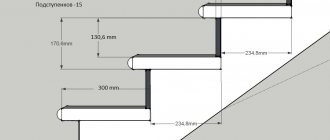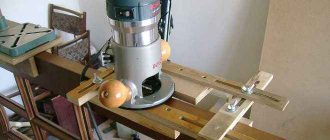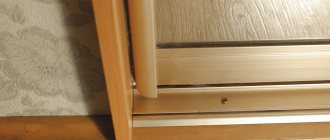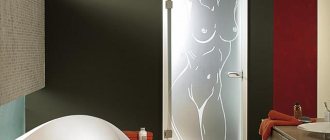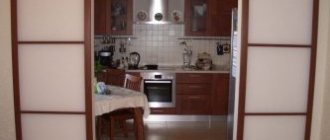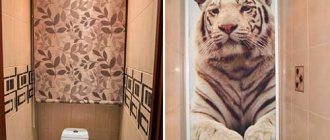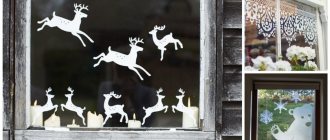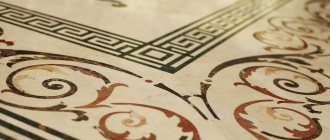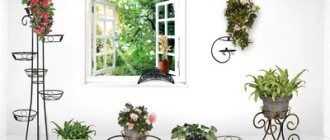There are different options for decorative coverings for kitchens. Patina can rightfully be considered the most exquisite frame for a kitchen façade.
The thing is that it creates the effect of antiquity in modern things. And in many styles, the presence of age marks in the interior is an important component of a well-finished design.
Check out some photo options for kitchens with patina.
Creating a decorative coating
It takes a long time for furniture to become covered with a natural patina. In addition, not all materials are covered with this natural coating. Products made of copper are exposed to the best impact.
But what if we are talking about a kitchen made of wood? Modern techniques for artificially applying patina come to the rescue.
Using specially selected paints, enamels and acids, craftsmen manually increase the “life” of newly born furniture. The result does not need to be expected for decades. Everything happens in a matter of minutes.
Compatibility of patina with different styles of kitchens
Patina is a greenish coating that, over time, seems to grow on the surface of the furniture in layers.
A multi-layer effect is created. This phenomenon can be compared to ivy gradually covering buildings - elegant and beautiful.
So what interior styles will this coating go well with? Definitely, these are two strikingly opposing design styles: classic and Provence. Let's take a closer look at the design of kitchens with patina in these designer images.
Classic style
Thanks to different spraying techniques, you can give a modern kitchen with a patina both an aristocratic look and a share of rustic notes. As mentioned above, one of the leading styles that goes well with patina is the classic style.
The decisive role in the creation of one or another stylistic motif is the base color of the facade. It is this that creates the basis for the entire image of a classic kitchen with patina.
Therefore, if you are a supporter of classics and consistency, choose light colors. Against the background of delicate shades of the base, patina looks most advantageous and transfers all the emphasis to itself.
The best and win-win solution would be the absence of additional sharp accents in decorating the kitchen space.
This is because a classic kitchen with patina is a self-sufficient decor that does not require additional elements to create a complete image.
Types and techniques of patination
Patina can be natural (natural) or artificially created. The latter is achieved through special techniques that allow you to achieve the desired result faster.
Artificial patination can also be done in several ways. Below are techniques that are applicable not only for furniture made of solid wood, but also for furniture with film, veneered MDF facades.
1. The simplest one is coating with acrylic paint.
To create a plaque on the facades, you just need to choose the right paint tone that goes well with the set. With a light kitchen this will not be a problem. Gold and silver patina looks most noble and natural against the background of light colors. The corresponding color can also be found among acrylic compositions.
The paint is applied with light, abrupt strokes, mainly on the bulges and depressions of the furniture, and the smooth surface of the facades is left untouched. Another option is to cover the facades in several layers and sand them in the right places, revealing the areas covered with gold paint. In the second case, you will spend more time, but the result will look more neat and natural. For beginners this is the most suitable method.
The technology is simple, but requires knowledge of all the intricacies: preparation, protective primer, stages of paint application, etc. How to properly perform patination, watch the video:
2. Artificial cracking
This technique is called craquelure. The method is more complex and expensive. You can use ready-made products, for example, beveled varnish, which, after drying, will create the desired result. You can make your own composition from home, household products - PVA glue, egg white, etc.
Stain coating
Using this method you can create the effect of wood that has turned gray over time.
Kitchen design with patina in a classic style
Design options for a classic kitchen with patina can be combined sets. They represent an alternation of facades with glazed and lattice sections. But here, be especially careful in choosing the color of the patina itself.
Avoid bright and pretentious colors: gold, silver. It is also not recommended to display household appliances and other kitchen utensils.
Maintain minimalism and visual rigor. This way you will create a solid image of your kitchen and your home as a whole.
Floor and ceiling
To highlight the kitchen set against the background of the walls, their design should be done in discreet colors or with a fancy pattern. In most cases, the ceiling is made white, which helps to visually expand the space. It is important that the color of the ceiling is at least 2-3 tones lighter than the walls and flooring. There are no palette restrictions for floor color. The main thing is to take into account the correspondence of its shade to the main pieces of kitchen furniture.
The design of the flooring should be combined with the ceiling
Provence
This style has become very popular in Europe and rightfully occupies a leading place in the frequency of decoration of apartments and houses.
The roots of Provence grow from France. Therefore, if you want to create a charming atmosphere of a provincial house in the south of France in your kitchen, choose Provence. It is easy to understand and has a relaxed simplicity and comfort.
You can decorate your set with different types of patina, but the most successful option is the crackle technique.
The crackle technique involves applying primers and paints to the surface of a set in such a way that the result is the effect of peeling paint.
Crackle - a design technique that is expensive, but it pays for itself. Durability and originality are guaranteed.
How the process of patoning facades in the kitchen is carried out
The advantages of a process such as patonation are that it can be applied to almost any surface, even to such a simple material as MDF. Before you start work, you need to prepare all the tools and materials. These include: spray bottle, brushes, colorless polyurethane primer, varnish.
To begin with, an insulator is applied to the surface to be treated, that is, to the façade. The soil should be applied evenly, in a very thin layer - a spray bottle can achieve this effect. After this, colorless polyurethane primer is applied to the surface of the facade in the same thin layer. After drying, it must be thoroughly sanded, then the patina itself must be applied. After this, the facades are wiped with a hard or soft sponge (depending on what effect should be achieved).
The more intensive such grinding is, the more aged and textured the facade will look. As soon as this stage of work is completed, glossy or matte varnish should be applied to the surface to be treated in several layers.
Tip: To protect kitchen furniture from moisture and steam, you should use polyurethane varnish.
Color solution
The best shades of patina in a Provence-style kitchen will be golden, silver, and maroon shades. Why should you choose such bright colors?
Because the basis of the facades of the set should be selected calm and warm, it is possible in a matte finish. Thus, bright patina accessories against the background of a restrained base will stand out and convey harmony.
Antique style solid wood kitchen trim
An antique solid wood kitchen is a collection of cabinets, countertops, chairs and shelves that showcase the beauty of the natural material. This is achieved in various ways: tinting, patination, brushing, carving, polishing, inlay, painting, etc. Antique pine kitchens are the simplest possible option, and since the material is inexpensive, such a set can be painted in a suitable color .
Antique wooden set
In order for the furniture to “play”, it needs to be provided with a suitable design - finishing of the walls, floor and ceiling.
Walls and apron
A beautiful kitchen in the old style must certainly have an apron made of traditional materials: ceramics, mosaic, terracotta. The remaining walls are usually finished in such a way as to further emphasize that this interior is created in an antique style. For this purpose, cladding with natural stone, ceramics, and natural wood is used. You can expose the brickwork and coat it with a special compound to get a refined stone wall.
Panel on the apron
Painting the walls will cost significantly less. In this case, preference is given to textured compositions in calm natural colors: beige, wood, olive, terracotta.
You can even get by with covering the walls with white acrylic paint, but under no circumstances should you give up the apron.
Floor and ceiling
The most budget-friendly option for finishing the kitchen floor is laminate. For a country or rustic-style kitchen, models are chosen based on solid wood with the widest possible slats or imitation of natural stone. Accordingly, a more expensive alternative is wooden flooring, parquet or cladding with natural stone or porcelain stoneware.
Floor lined with natural stone
For finishing the ceiling, solid wooden beams or their modern replacement - acrylic or polyester moldings that imitate solid wood - are best suited. The Provence style corresponds to stucco molding and a simple whitewashed ceiling, and for a cowboy style, cladding with boards or wooden panels would be a good idea.
Wooden ceiling decor
Photos of kitchens with patina
Please repost
0
